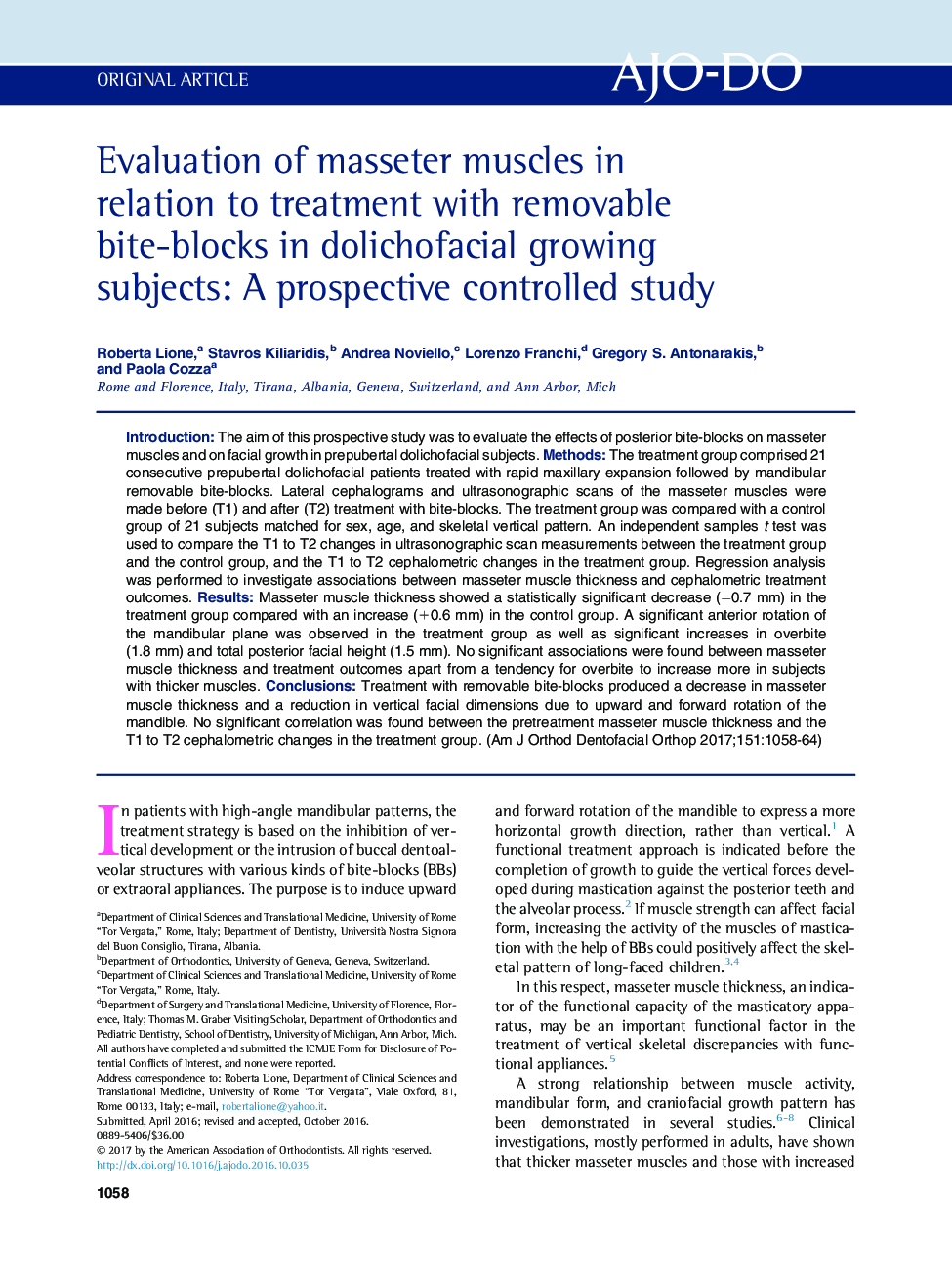| Article ID | Journal | Published Year | Pages | File Type |
|---|---|---|---|---|
| 5637605 | American Journal of Orthodontics and Dentofacial Orthopedics | 2017 | 7 Pages |
â¢Removable bite-blocks induce upward and forward rotation of the mandible.â¢This reduces masseter muscle thickness and vertical facial dimensions.â¢Pretreatment masseter muscle thickness was not correlated with T1-T2 cephalometric changes.
IntroductionThe aim of this prospective study was to evaluate the effects of posterior bite-blocks on masseter muscles and on facial growth in prepubertal dolichofacial subjects.MethodsThe treatment group comprised 21 consecutive prepubertal dolichofacial patients treated with rapid maxillary expansion followed by mandibular removable bite-blocks. Lateral cephalograms and ultrasonographic scans of the masseter muscles were made before (T1) and after (T2) treatment with bite-blocks. The treatment group was compared with a control group of 21 subjects matched for sex, age, and skeletal vertical pattern. An independent samples t test was used to compare the T1 to T2 changes in ultrasonographic scan measurements between the treatment group and the control group, and the T1 to T2 cephalometric changes in the treatment group. Regression analysis was performed to investigate associations between masseter muscle thickness and cephalometric treatment outcomes.ResultsMasseter muscle thickness showed a statistically significant decrease (â0.7Â mm) in the treatment group compared with an increase (+0.6Â mm) in the control group. A significant anterior rotation of the mandibular plane was observed in the treatment group as well as significant increases in overbite (1.8Â mm) and total posterior facial height (1.5Â mm). No significant associations were found between masseter muscle thickness and treatment outcomes apart from a tendency for overbite to increase more in subjects with thicker muscles.ConclusionsTreatment with removable bite-blocks produced a decrease in masseter muscle thickness and a reduction in vertical facial dimensions due to upward and forward rotation of the mandible. No significant correlation was found between the pretreatment masseter muscle thickness and the T1 to T2 cephalometric changes in the treatment group.
